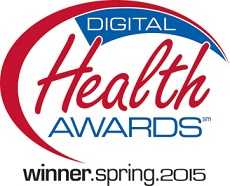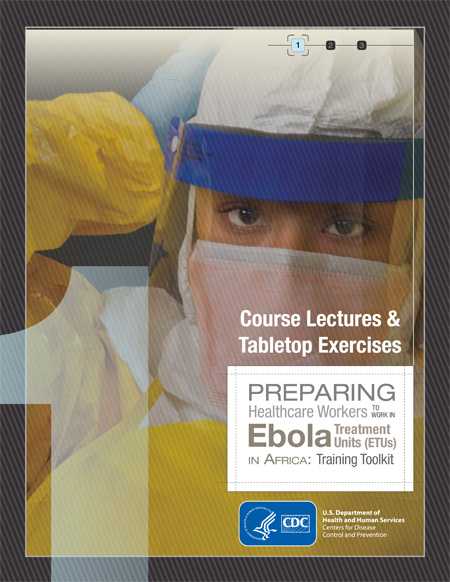Preparing Healthcare Workers to Work in Ebola Treatment Units (ETUs) in Africa: Training Toolkit
Page Summary
Purpose: The training toolkit is designed to help organizations replicate CDC’s 3-day in-person training course to help prepare healthcare workers (HCWs) to work in ETUs in Africa.
Intended audience: Organizations that want to offer a training course for HCWs preparing to work in ETUs in Africa in response to the Ebola epidemic.
Disclaimers
These Ebola response training materials are intended only for healthcare workers preparing to work in Ebola Treatment Units (ETU) in Africa in response to the Ebola epidemic, i.e., they are not intended to prepare healthcare workers to work in the United States. The information in these materials is accurate as of December 2014. Additionally, the mention of any product name in these materials is not meant to serve as an official endorsement of any such product by the Centers for Disease Control and Prevention (CDC) or any other entity of the U.S. government.
This exercise is designed to illustrate best practices for infection prevention and control principles. It is based on information from similar courses developed by Médecins Sans Frontières (MSF) and the World Health Organization (WHO), and on CDC guidelines for infection prevention and control. It is not intended to endorse a particular protocol, product, or procedure. In a real ETU, supplies, conditions, and protocols will vary. When healthcare workers deploy to work in real ETUs, they are expected to receive additional training and coaching before they begin working independently.
The toolkit is a complete guide with training materials, templates, and videos to help offer a course that:
- Teaches HCWs principles of infection prevention and control to work safely in an ETU setting
- Uses blended learning methods, including:
- Lectures focused on Ebola transmission, epidemiology, and infection prevention and control
- Tabletop exercises providing opportunities for students to discuss lecture content and how to apply it in ETUs
- Hands-on interactive exercises in a mock ETU where students:
- Apply the concepts they learned in the lectures and discussed in tabletop exercises
- Practice donning and doffing personal protective equipment (PPE)
- Perform simulated patient care activities while wearing PPE
The training course is considered a first step in preparing HCWs to work in an ETU. When they deploy to work in real ETUs, HCWs are expected to receive additional training and mentoring before they begin working independently.
Preparing Healthcare Workers to Work in Ebola Treatment Units (ETUs) in Africa: Training Toolkit
Winner of Digital Health Award

The toolkit received a Bronze Award for Web-based Resource in the 17th annual Digital Health AwardsSM program. This competition, held twice each year, recognizes the world’s best digital health resources.
“We were delighted to participate in the 2015 Digital Health Awards competition, and were honored to be selected as a winner,” said Kathy Towers-Solis. “Our winning entry was chosen from nearly 600 entries judged by a panel of distinguished experts in digital health media.”
The Digital Health AwardsSM program is organized by the Health Information Resource CenterSM, a national clearinghouse for professionals who work in consumer health fields.
Ebola Training Toolkit Overview Webinar
Originally aired March 19, 2015, 12 noon – 12:35 p.m. Eastern.
CDC hosted a webinar March 19, 2015, to provide an overview of the new Ebola Training Toolkit, Preparing Healthcare Workers to Work in Ebola Treatment Units (ETUs) in Africa. The toolkit is designed for organizations that want to offer a training course for healthcare workers (HCWs) preparing to work in ETUs in Africa in response to the Ebola epidemic. The webinar included information about the toolkit components and a Question and Answer segment.
- Page last reviewed: August 17, 2015
- Page last updated: March 3, 2017
- Content source:


 ShareCompartir
ShareCompartir
